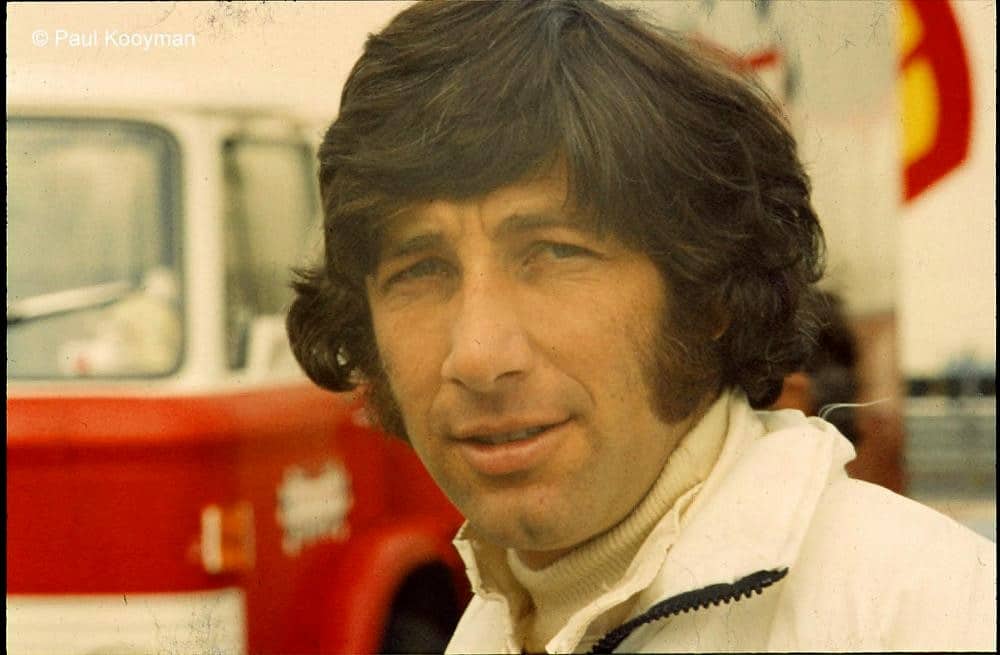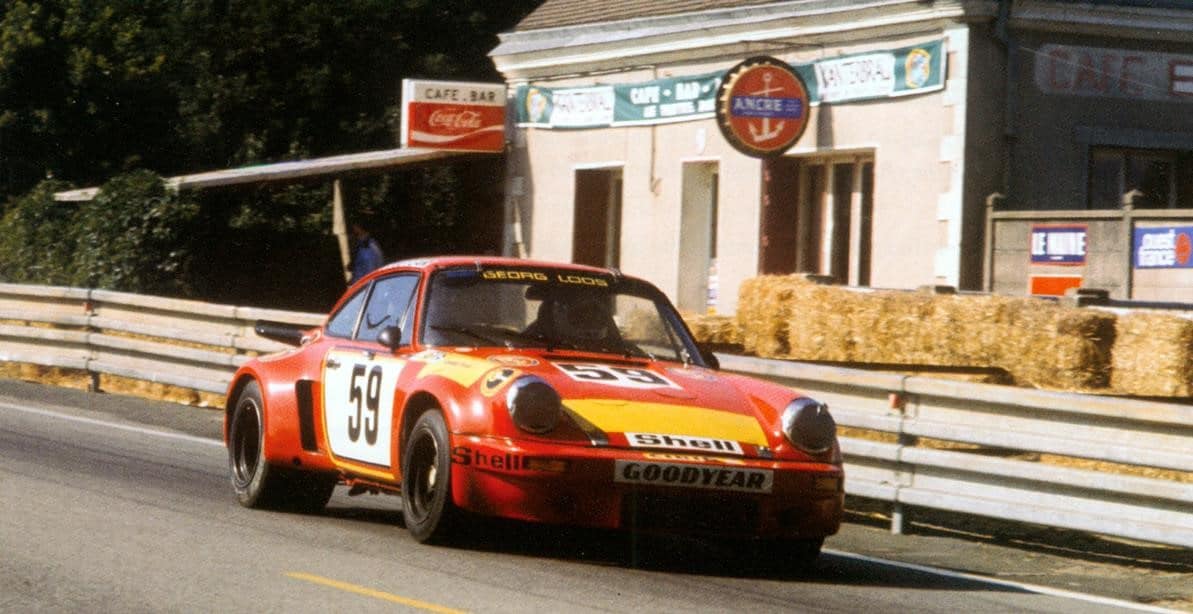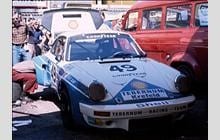Howden Ganley – Porsche 911 RSR – Le Mans 1975 & 1976
Howden Ganley, originally from Hamilton, New Zealand, first raced at Le Mans in 1972. Together with Francois Cevert, Howden finished 2nd in 1972 in a Matra-Simca MS670 V12 3.0 Litre. In 1973 he raced again at Le Mans, this time with Derek Bell in one of John Wyer’s Gulf Mirage M6 3.0 litre Cosworth DFV V8s. The car retired on lap 163 of the winner’s 356 laps with engine oiling problems. Following a very bad accident after suspension failure in a Maki F101 F1 car at Nurburgring in August 1974, Howden needed a long rehabilitation period to recover from serious damage to his legs and ankles. In 1975 he received an offer from George Loos of Germany to race the ‘Gelo Racing’ ex-Gulf Mirage GR7 Cosworth V8 in the Nurburgring 1000km on 1 June, partnered by Tim Schenken. They finished second to the Alfa Romeo T33 of Art Merzario/Jacque Laffite.

As Howden records in his autobiography ‘The Road to Monaco’, pg 342, he then received an offer from George Loos to drive for Gelo Racing at the 1975 Le Mans held on 14/15 June ‘75, this time in a Porsche 911 Carrera RSR Flat 6 3.0 litre in the GT Class. Howden accepted the offer and shared the drive with Tim Schenken. Howden said “I was unaccustomed to driving a race car with a roof, or one that liked to lift its inside front wheel on the exit of corners, so initially it was a strange experience.” They qualified the red #59 Porsche RSR in 28th place on the start grid with a lap time of 4 minutes 20 seconds (188.862km/h). Fastest qualifier was the Jacky Ick/Derek Bell Gulf Mirage GR8 Cosworth with a time of 3min 49.9 (213.589km/h).
After the late withdrawal of some cars they were placed 23rd on the grid of 51 cars that faced the starter’s flag. Tim took the first stint at the wheel in the race and was quickly up to 12th place by the end of the first hour. At the end of the second hour he was still 12th but then moved up to 10th place which he held for the 3rd and 4th hours. However, with a gear change problem, the car was brought into the Pits where the gearbox was changed, thus dropping the car to 34th position after 5 hours. At hour 6 the car was 37th but Tim was back into the Pits again with the same gear change problem, so another gearbox change was needed.
After the second change of gearbox Howden took the wheel but the car had lost a lot of track time and was down in 40th position by the end of the 8th and 9th hours. With all the time lost in the Pits, it became clear that their Porsche would be unlikely by mid-race distance (i.e. 4.00 am on Sunday morning) to make the required cut-off of 50 percent of the Km/mileage of the lead car. Notwithstanding, Tim and Howden drove hard in a perfectly serviceable car, hoping the officials would not notice that they had missed the cut-off criteria. At the 12 hour point they were 37th of the 39 cars still running and in the hours that followed they were: – 13 hours 37th of 37cars, 14 hrs 36th of 36, 15hrs 36/36, 16hrs 36/36, 17hrs 36/36, 18 hrs 35/35, 19hrs 35/35, 20hrs 35/35. But then the officials noticed the #59 Porsche was still running so the Team Manager was instructed to stop the car!
With his extensive knowledge of gearboxes, Howden had much earlier found the cause of the gear change problem in the first gearbox lay in the interlock mechanism that was designed to stop a driver going ‘across the gate’ and skipping out gears. So, against the wishes of the Gelo Team mechanics, Howden had the interlock mechanism removed from the second gearbox before it was fitted to the car; thereafter, the second gearbox worked perfectly but to no avail as the car was excluded from the official results. The Ickx/Bell Gulf Mirage GR8 Cosworth V8 won the race.

Howden’s final race for George Loos was again at Le Mans, this time in 1976. Howden shared the drive of a white and blue #49 Porsche 911 Carrera RSR Flat 6 3.0 litre in the Group 5 class with German driver Clemens Schikentanz. Clemens qualified their Porsche in 40th position of the 55 starters with a lap time of 4 minutes 25.3 seconds (185.089km/h). Fastest qualifier was Jean Pierre Jabouille in an Alpine A442-Renault with a time of 3min 33.1 secs (230.427 km/h). Clemens started the race from Row 20 on the grid and by the end of the first hour, the car was up from 40th to an excellent 26th position. By the end of the second hour the car was 27th, by hour 3/25th (51 cars still running), 4hrs/21st, 5hrs/20th, 6hrs/22nd. At some time within the 7th hour, the car dropped out of the race with transmission problems while Clemens was driving. The car was listed in 47th position of the 55 cars that started the race.



Simon Ireland
Posted at 00:01h, 05 SeptemberPlease add me to any updates.
Thank you
Simon
Jim Barclay
Posted at 17:27h, 07 MarchHi Simon, you asked to be kept up to date with future articles on my blogsite; I suggest that you signup to my e-newsletter via the “SUBSCRIBE” section in the right hand column. That way you will be notified when any new articles in your nominated category are added. Kind Regards, Jim